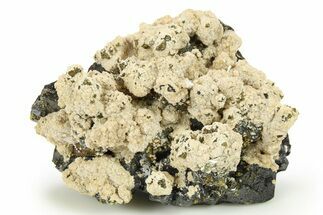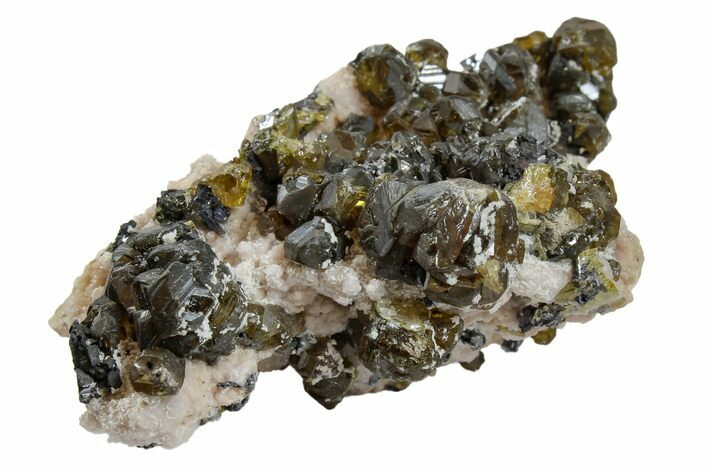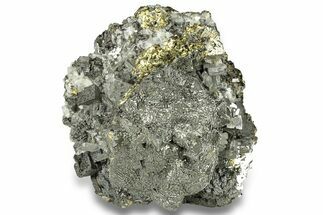This Specimen has been sold.
2.8" Translucent Sphalerite Cluster on Calcite - Peru
This is a beautiful formation of translucent sphalerite crystals (resembling sphalerite var. cleiophane) on calcite. It comes from the Huaron Mining District in Peru and the entire specimen measures 2.8" long.
Sphalerite is a part of the sulfide group and typically exhibits a grey/black appearance due to high concentrations of impurities. In its purest state, sphalerite's chemical composition is ZnS, and can display a gemmy transparent light tan/yellow color. This is one of the few minerals that can form crystals ranging anywhere between gemmy and transparent to opaque and metallic-like. Opaque or cloudy sphalerite tends to be most abundant since iron easily replaces zinc in the process of formation.
About Calcite Crystals
Calcite crystals are a form of calcium carbonate (CaCO₃) known for their diverse shapes, transparency, and vibrant range of colors. They typically form in rhombohedral, scalenohedral, or prismatic shapes, often with well-defined, sharp edges and glossy surfaces. Calcite crystals are often translucent or transparent, sometimes displaying a double refraction effect where objects viewed through the crystal appear doubled. They can appear in various colors—white, clear, yellow, pink, blue, green, and orange—depending on impurities or trace minerals.
A notable characteristic of calcite is its reaction with weak acids like vinegar, which causes it to effervesce, or fizz, as it releases carbon dioxide. This property makes calcite crystals a key tool in geological identification and studies. Calcite forms in many environments, from sedimentary rocks like limestone and marble to hydrothermal veins.
Calcite crystals are a form of calcium carbonate (CaCO₃) known for their diverse shapes, transparency, and vibrant range of colors. They typically form in rhombohedral, scalenohedral, or prismatic shapes, often with well-defined, sharp edges and glossy surfaces. Calcite crystals are often translucent or transparent, sometimes displaying a double refraction effect where objects viewed through the crystal appear doubled. They can appear in various colors—white, clear, yellow, pink, blue, green, and orange—depending on impurities or trace minerals.
A notable characteristic of calcite is its reaction with weak acids like vinegar, which causes it to effervesce, or fizz, as it releases carbon dioxide. This property makes calcite crystals a key tool in geological identification and studies. Calcite forms in many environments, from sedimentary rocks like limestone and marble to hydrothermal veins.
SPECIES
Sphalerite & Calcite
LOCATION
Huaron Mining District, Pasco Department, Peru
SIZE
2.8" wide
CATEGORY
ITEM
#169646
 Reviews
Reviews













